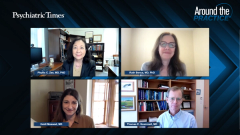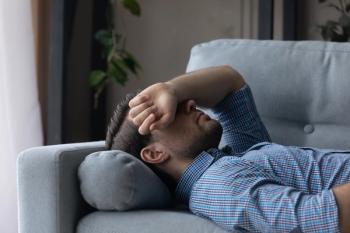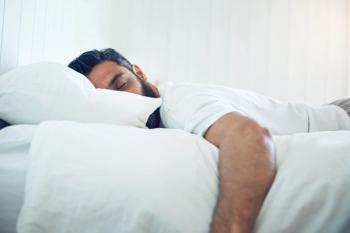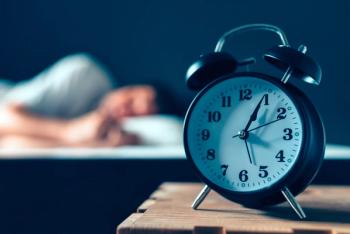
Challenges in the Diagnosis of Narcolepsy
A multidisciplinary panel of experts outline the difficulties of distinguishing narcolepsy frfom other sleep disorders and psychiatric comorbid conditions.
Episodes in this series

Thomas E. Scammell, MD: Hello, and thank you for joining this Psychiatric Times Around the Practice program on the management of narcolepsy. I am Tom Scammell. I am a Professor of Neurology at Harvard Medical School Beth Israel Deaconess in Boston Children’s Hospital. I am joined by Dr Heidi Mowad, who is a clinical assistant professor of neurology at Case Western Reserve University School of Medicine in Cleveland, Dr Ruth Benca, who is a professor and chair of psychiatry at Wake Forest School of Medicine and Dr Phyllis Zee, who is a professor of neurology and director of the circadian and sleep program at Northwestern University School of Medicine. In addition to reviewing the diagnosis and management of narcolepsy, we will be presenting 2 hypothetical patient cases and will be talking through approaches to treatment. Let’s begin.
Let’s just start off generally talking about the challenges of diagnosing narcolepsy. How often is it underdiagnosed, or misdiagnosed? Why has it proven so difficult to properly diagnosis, and what is the differential diagnosis? Dr. Zee, do you want to start us off with that one?
Phyllis C. Zee, MD, PhD: When you look at the data that has been published about the lag between presentation of symptoms of narcolepsy to diagnosis, it can lag up to about 3 to 8 years. Some of it is because it is misdiagnosed or underdiagnosed about 60% of the time, and that is a huge number. Of course, in addition to lack of awareness, or perhaps lack of familiarity with the disorder, probably what is driving this are common comorbidities that exist in patients with narcolepsy, such as depression and anxiety disorders. There are also other sleep disorders like sleep apnea, which is actually common in patients with narcolepsy, and even circadian rhythm sleep disorders. Excessive daytime sleepiness is so common; it is very nonspecific to many of the conditions that psychiatrists and neurologists take care of. Also, many patients are on medications that could mask some of the symptoms of narcolepsy. I think those are some of the common reasons for some of the missed or delayed diagnoses.
Thomas E. Scammell, MD: You mentioned that depression is often comorbid with narcolepsy. Dr. Benca, do you want to talk about how these symptoms can get blurred together?
Ruth Benca, MD, PhD: One thing that a significant subset of patients with depression will complain about is excessive daytime sleepiness. Some of them are actually excessively sleepy and some of them are just really fatigued and don’t show objective evidence of excessive sleepiness, but they will report that they are sleepy. The other issue is that, like narcolepsy, mood disorders are sometimes characterized by early entrance into REM sleep. You can sometimes see shorter REM latency in patients with mood disorders, so there can be some overlap there.
In addition to narcolepsy often not being diagnosed in a timely manner, conditions often get diagnosed as narcolepsy inappropriately. One of the things I’ve seen more is people who are simply sleep deprived, such as those who are doing shift work, or physicians, who may be doing a lot of call and are not getting enough sleep and are falling asleep at work. These folks often get diagnosed with narcolepsy. Actually, they are just sleep deprived.
Thomas E. Scammell, MD: What kind of tools do you use to actually evaluate daytime sleepiness and separate it from, for instance, a more typical sense of fatigue and depression?
Ruth Benca, MD, PhD: One thing is that you do a more careful clinical exam. One of the issues I see a lot in psychiatry is that patients report that they are tired. We assume they are sleepy. I always try to distinguish if they are tired and falling asleep inappropriately, or you just wish you were asleep and you’re exhausted.
Diagnosing narcolepsy, we generally do sleep testing. That is where it is really important to verify that patients are not sleep deprived and are sleeping adequately, and that they get sufficient sleep before we do their multiple sleep latency test.
Thomas E. Scammell, MD: Do you like the Epworth Sleepiness Scale?
Ruth Benca, MD, PhD: The Epworth Sleepiness Scale just tells you whether the patient thinks they are excessively sleepy. It is not specific to any particular sleep disorder. Sometimes patients who are simply fatigued may report very high Epworth scores. I see that a lot in psychiatric patients. They sometimes have high Epworth scores but when we test them objectively, they are not actually sleepy.
Thomas E. Scammell, MD: One question I like to ask under those circumstances is: How many times do you actually fall asleep when you did not plan to in the last week? Because I agree with you. Sometimes there is a little inflation on the Epworth sleep score. People say, “I could fall asleep when I am watching TV.” Then I ask, “Did it really happen?” Usually the answer is no. Getting down to the nuts and bolts of falling asleep could be useful.
Phyllis C. Zee, MD, PhD: One of the things I try to do is to see whether there is any cataplexy. It is quite amazing to me how oftentimes we miss that because we are asking about big things. Are you falling when you laugh hard? Do your knees buckle? Even if they say “No” to that, I try to probe deeper to see if I can get some of the milder symptoms, perhaps mild manifestations of cataplexy. Often times that can be helpful, especially to diagnose narcolepsy type 2. That can be more specific.
Ruth Benca, MD, PhD: There is another screening tool if you are trying to determine whether someone has type 1 narcolepsy, and that is the Swiss narcolepsy scale. It is a 5-item scale that does elicit symptoms of cataplexy. It is a little bit more complicated to score, because you have to go through a formula. It doesn’t really help you with those patients who might have type 2 narcolepsy or narcolepsy without cataplexy, which are the group that tends to overlap a lot with other disorders that might present with hypersomnia, including mood disorders or even idiopathic hypersomnia.
Transcript edited for clarity
Newsletter
Receive trusted psychiatric news, expert analysis, and clinical insights — subscribe today to support your practice and your patients.






















